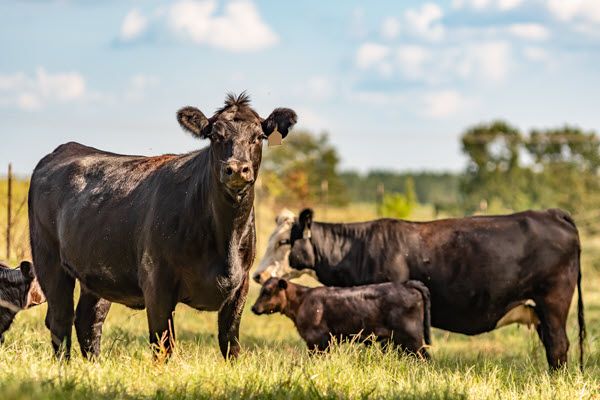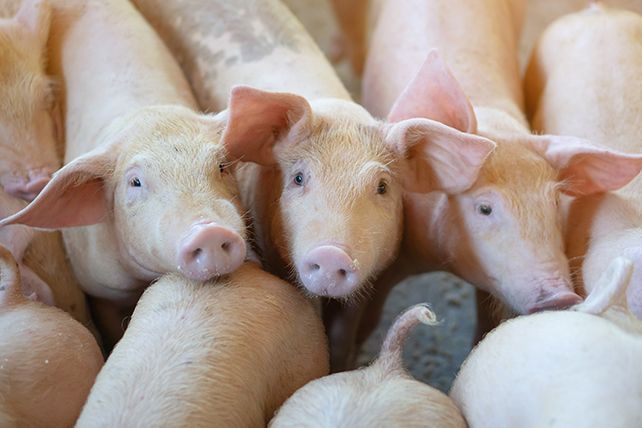How Does Livestock Risk Protection Work?
Three experts walk through the process and benefits
With ongoing market volatility caused by the economy, disease and global factors, more farmers and ranchers are turning to Livestock Risk Protection (LRP). Administered by the USDA Risk Management Agency (RMA), this risk management tool was created to help insure against declining market prices.
But how does livestock risk protection work? And what about approval, purchase and claim processes? Three ProAg experts help explain the (surprisingly simple) LRP journey, providing peace of mind for your operation.
How do I purchase an LRP policy?
Farmers and ranchers interested in purchasing an LRP policy first need to contact their livestock-certified crop insurance agent to fill out the LRP application. If you’ve filled one out before, you don’t need to again. Think of this like a pre-approval process. A trusted ProAg agent can walk you through it.
Once approved, you will then select a specific coverage endorsement (SCE) for the number of head, target weight and the desired length of time, which ranges from 13 to 52 weeks.
SCE options include LRP-Fed, LRP-Feeder and LRP-Swine. Multiple SCEs can be selected with one application. The SCE selection is critical, as no coverage is attached to the insured until an SCE is submitted and approved.
Your insurance coverage starts the day you purchase an SCE and RMA approves the purchase.
Make sure you have the following information handy to complete the LRP application and SCE form:
LRP application

SCE endorsement

I’ve purchased an LRP policy and selected an SCE. Now what?
“It’s very simple,” says ProAg claims processing supervisor Diane Fishburn. “The only thing the policyholder has to do is wait. Your insurer will send a letter in the mail after your end date telling you whether a claim has been triggered.”
Fishburn says RMA determines the value of the actual cattle or swine price versus what was expected or what the animals were sold for. Should RMA’s value be lower, the policyholder will receive a notice of probable loss. The policyholder would then fill out the claim form with the number of animals that were insured, the endorsement they have, and if they retained ownership of the animals or sold them within 60 days of the end date.
Policyholders working with ProAg can sign up for direct deposit of their indemnity payment into their account using the myProAg® policyholder portal.
However, if prices increase, and therefore no claim is triggered, the policyholder will receive a letter after the end date stating that any potential claim has been withdrawn.
Fishburn says the process is usually simple, but policyholders need to be aware of the 60-day period from when the claim is issued. “There’s no leeway on it. Once that letter arrives saying a policyholder has a claim, they have 60 days to provide the information needed to receive the indemnity,” she says.
When could the livestock insurance process get a little more complicated? When a policyholder does not sell the animals. “Policyholders aren’t required to sell,” says Fishburn. “But they still must prove they owned the animals during the endorsement period and met the marketable weight.”
While the 60-day rule is king, it’s all for naught if a policyholder can’t provide proof of ownership of the insured animals.
Farmers are attracted to Livestock Risk Protection because it’s a simple, tailored-to-your-needs policy.
Documentation, price monitoring make LRP go further.
“The policyholder must be able to prove ownership to get the indemnity,” says Katie Brechler, an underwriter at ProAg. “Records such as the purchase agreement, receipt of sale or veterinary visits can help establish proof.”
Bookkeeping is often the crux of many operations. Proper documentation makes the difference when it comes to making sure your insurance works for you.
“If a farmer knows they’re going to have a tough time proving ownership, LRP may not be the best policy,” adds Brechler. “Because LRP is federally subsidized by the government, we have to follow the rules and regulations they provide.”
Like with any insurance policy, a great relationship with your agent goes far. But Brechler says it’s even more important for LRP policies.
“SCE prices are released later in the afternoon and have to be submitted to ProAg by 8:25 a.m. CT the following day,” says Brechler. “So, your agent will need to work these hours to get all of the required information submitted.”
And more farmers and ranchers are opting in LRP each year, says Whitney Redig, a senior district sales manager at ProAg.
Little-known fact: LRP premiums are due after coverage ends.
“Farmers are attracted to Livestock Risk Protection because it’s a simple, tailored-to-your-needs policy,” says Redig. “Compared to putting a put and call out on the board, farmers don’t have to do a whole lot and can tailor it to any size of operation.”
LRP gives farmers and ranchers a price lock, with a guaranteed floor amount. Adding to the draw is the fact that billing doesn’t happen until after the coverage period ends.
“It certainly helps from a cashflow perspective,” says Redig. “Farmers can choose anywhere between a 13- and 52-week coverage period, and select the end period to align with when they intend to go to market.”
Whether a claim is triggered and the premium is paid from the indemnity, or the coverage ends after a check is received from the sale of the animals, paying LRP’s premium is generally wallet-friendly.
Risk management that makes a difference.
LRP can make all the difference in challenging market conditions.
“We see a lot of young and beginning farmers take out an LRP policy,” shares Redig. “Particularly when they had to take out a loan to start their herd, LRP definitely adds some peace of mind.”
I hear from agents who have farmers and ranchers stressing about drought and other market conditions. It’s nice to be able to reassure them that LRP is there to keep their business going.
Global factors also contribute to LRP’s popularity.
“When fear abounded after Russia’s invasion of Ukraine, we saw a huge increase in policies,” says Brechler. “People were nervous the ports would be closing amidst other uncertainties and just wanted some peace of mind.”
Peace of mind is a luxury for farmers and agents suffering record drought conditions, too.
“I hear from agents who have farmers and ranchers stressing about drought and other market conditions,” Brechler adds. “It’s nice to be able to reassure them that LRP is there to keep their business going.”
And ProAg’s Redig lives and breathes that cycle with the farmers and ranchers she helps serve. The Missouri-based sales manager operates a cow-calf operation where calving happens twice per year.
“It’s unsettling to think twice each year we have calves on the ground with nothing covering them,” shares Redig. “Livestock insurance through LRP really makes the difference for us.”
Read more about LRP here and see if LRP is a good fit for you by talking with a trusted agent.
The description of coverage is for informational purposes only. The information described herein does not amend, or otherwise affect the terms and conditions of any insurance policy issued through ProAg or any of its subsidiaries.
